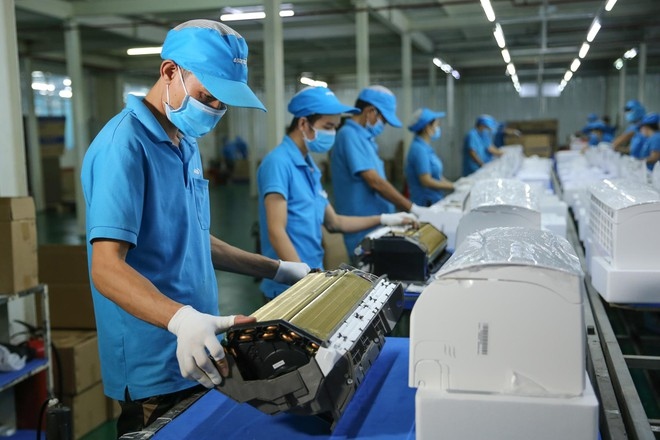Vietnam leaps up in Global Connectedness Index
Vietnam ranked 38th out of 169 countries in DHL’s Global Connectedness Index 2020, a single place higher than in 2017.

The latest index shows that the country is a fast-rising star in terms of global manufacturing, particularly as China is experiencing a fallout from its trade war with the United States, thereby allowing the Vietnamese market to welcome manufacturers keen to shift production away from the northern neighbour.
It scored its largest annual flow of foreign direct investment (FDI) in 2019 and gained greater attention as an alternative hub when COVID-19 served to disrupt several Chinese manufacturing systems and hit supply chains.
Vietnamese resilience to the negative impacts of the pandemic last year meant it was able to bounce back quickly. Indeed, the local economy expanded 2.9% last year and export value rose by 28.4% in the first half of this year in comparison to the same period from 2020, thereby making it a rare economic success story during the pandemic.
Even amid suffering its worst COVID-19 outbreak yet, the country is continuing to show signs of regaining its economic and manufacturing momentum.
IHS Markit’s Vietnam Manufacturing Purchasing Managers’ Index (PMI) for October rebounded to 52.1 in October after falling to 40.2 the previous month. Even as factories temporarily close due to lockdowns during the middle part of the year, total merchandise exports went up 21.8% for the first eight months of the year compared to 2020.
“Despite near-term risks, over the medium-term economic outlook, a large number of positive growth drivers are creating favorable tailwinds and will continue to underpin the rapid growth of Vietnam’s economy,” says Rajiv Biswas, executive director and chief economist for the Asia-Pacific region of IHS Markit’s, “This is expected to drive strong growth in Vietnam’s total GDP as well as per capita GDP.”
Cyn-Young Park, director for Regional Cooperation and Integration at the Asian Development Bank, pointed out that, “Even as investors may delay their decisions due to the current COVID-19 situation, Vietnam will continue to be a strong regional destination for investment, given the likely changes in the region’s value chain structures and the implementation of the Regional Comprehensive Economic Partnership (RCEP).”
Most notably, changes in Asia’s value chain include China’s shift away from low-cost production to products of higher value, such as robots and advanced semiconductors. This transition has contributed to drive up manufacturing wages, thereby making production hubs with lower labour costs and young workforces like Vietnam more attractive.
Moreover, the country’s close proximity to China and location along regional shipping routes also play to its advantage, meaning it is strongly connected internationally.
The nation has also shown a marked improvement, similar to that of neighbouring countries such as Cambodia, Malaysia, and Singapore. With reforms being made to open up the economy over the past few decades pushing up Vietnamese GDP per capita from roughly US$500 in 1985 to its current status as a middle-income country with a GDP per capita of US$2,715.
These policies have served to boost international trade flows, meaning the nation has earned a high place on the Trade pillar of the Global Connectedness Index. By 2019, the country had entered into numerous trade agreements with countries that account for 67% of the global economy.
“A country must have large international trade flows relative to the size of its domestic economy, and international flows must be distributed across the world for it to be considered globally connected,” said Bernardo Bautista, managing director and country manager of DHL Express Vietnam.

